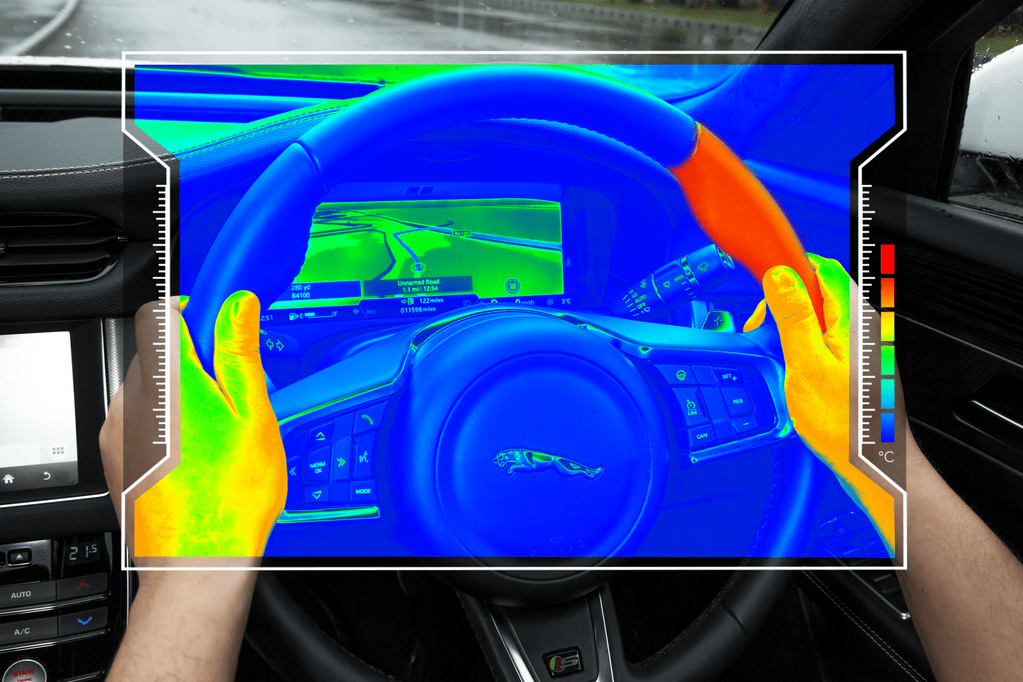JLR and Volvo technologies to benefit drivers and designers
10 June 2019

10 June 2019
A steering wheel developed by Jaguar Land Rover (JLR) could help keep drivers’ eyes on the road, using heat to tell drivers when to turn left or right.
The research, in partnership with Glasgow University, has created a ′sensory steering wheel’, parts of which can be quickly heated and cooled to inform drivers where to turn, when to change lane or to warn of an approaching junction. This could be particularly useful when visibility is reduced through poor weather or the layout of the road.
The technology has also been applied to the gearshift paddles to indicate when hand-over from the driver to autonomous control in future self-driving vehicles is complete.
Driver distraction is a major contributor to road accidents around the world and accounts for 10% of all fatal crashes in the US alone. JLR’s research suggests thermal cues could be a way to keep drivers fully focused on the road.
The cues work on both sides of the steering wheel, indicating the direction to turn by rapidly warming or cooling one side by a difference of up to 6â°C. For comfort, a driver could adjust the range of temperature change.
The company says that studies have shown temperature-based instructions could also be used for non-urgent notifications, where vibrations could be deemed unnecessarily attention-grabbing, for example as a warning when fuel is running low, or for upcoming events, such as points of interest. Thermal cues can also be used where audio feedback would be deemed too disruptive to cabin conversations or media playback.
VR Development
Meanwhile, Volvo Cars and Varjo, the Finnish maker of high-end augmented reality headsets, have created a world-first mixed reality approach to evaluating prototypes, designs and active safety technologies.
The two companies have made it possible for the first time to drive a real car while wearing a mixed reality headset, seamlessly adding virtual elements or complete features that seem real to both the driver and the car’s sensors, for development purposes. Until now, no other carmaker has been able to do this.
The collaboration will be further strengthened by the Volvo Cars Tech Fund’s decision to invest in Varjo. The Tech Fund is the carmaker’s venture capital fund that invests in high-potential technology startups.
′With this mixed reality approach, we can start evaluating designs and technologies while they are literally still on the drawing board,’ said Henrik Green, chief technology officer at Volvo Cars. ′Instead of the usual static way of evaluating new products and ideas, we can test concepts on the road immediately. This approach offers considerable potential cost savings by identifying priorities and clearing bottlenecks much earlier in the design and development process.’